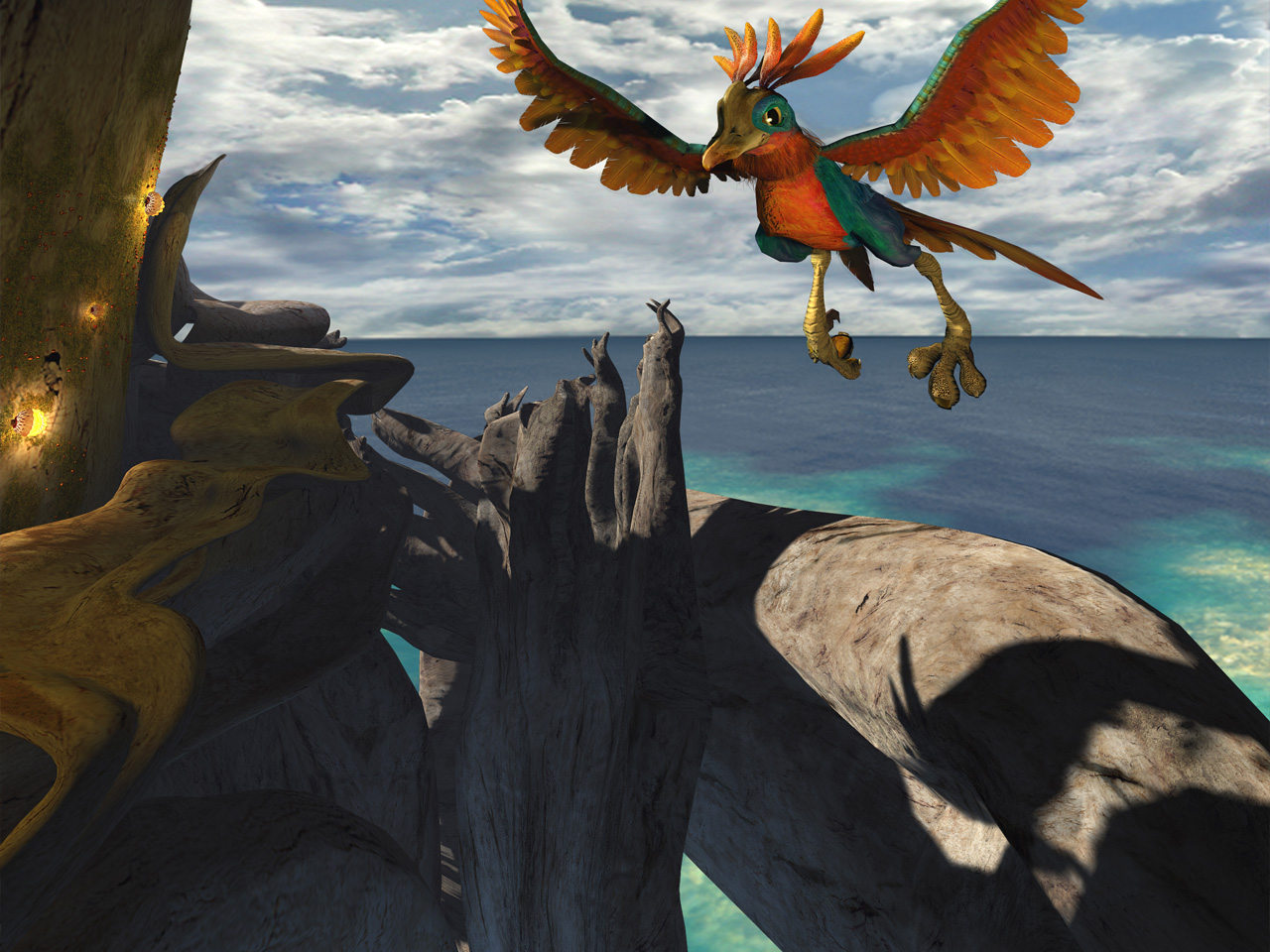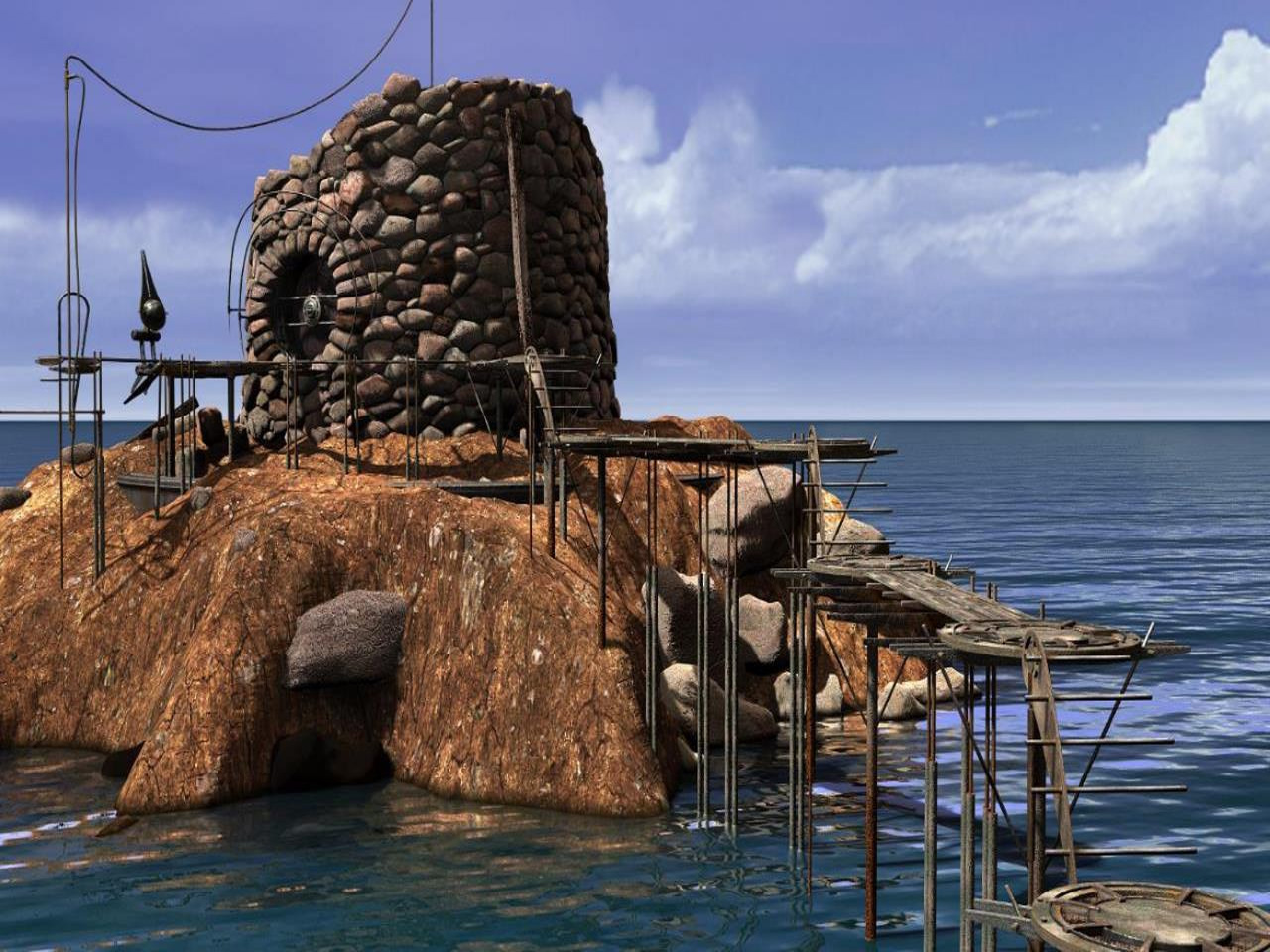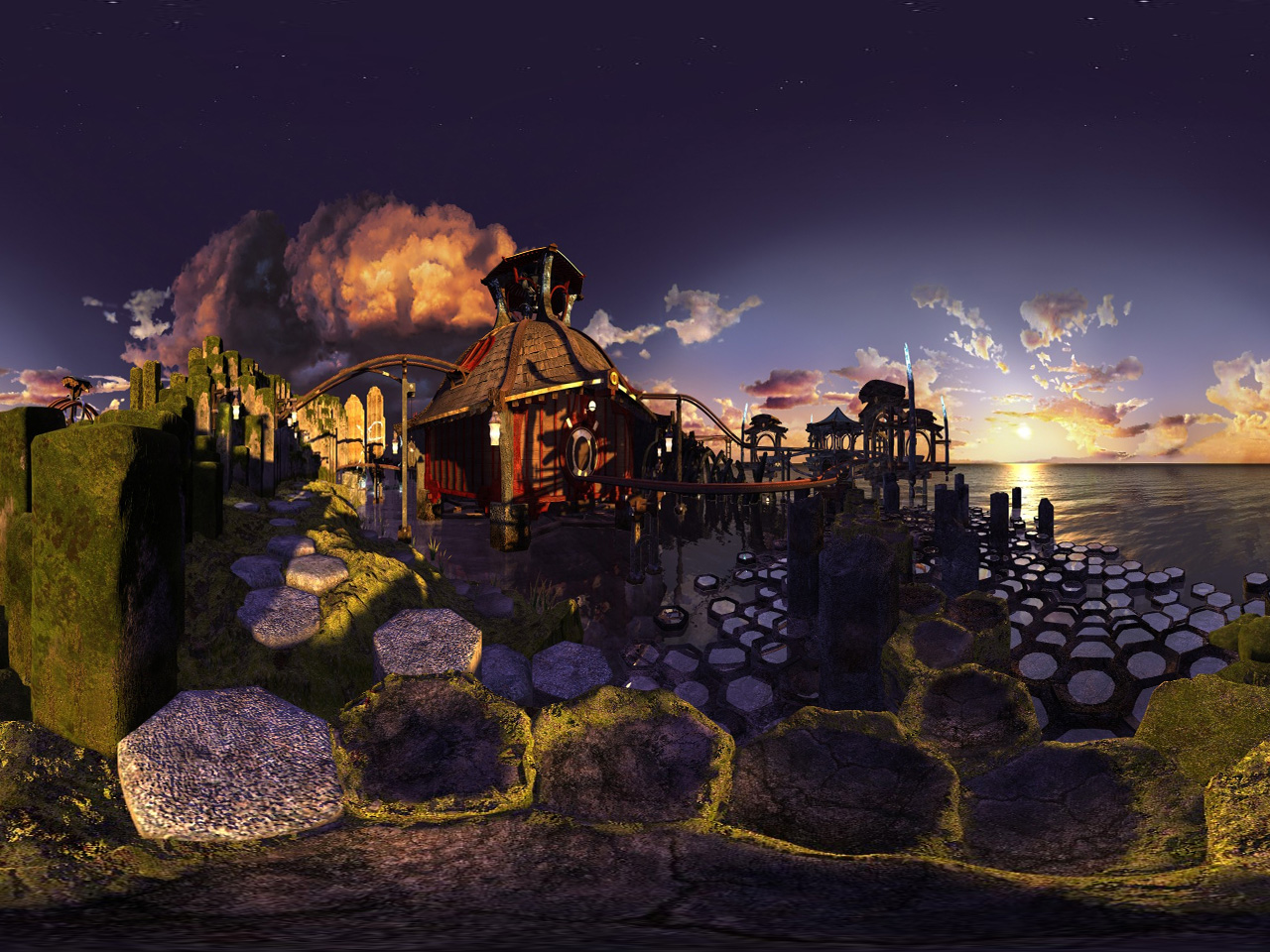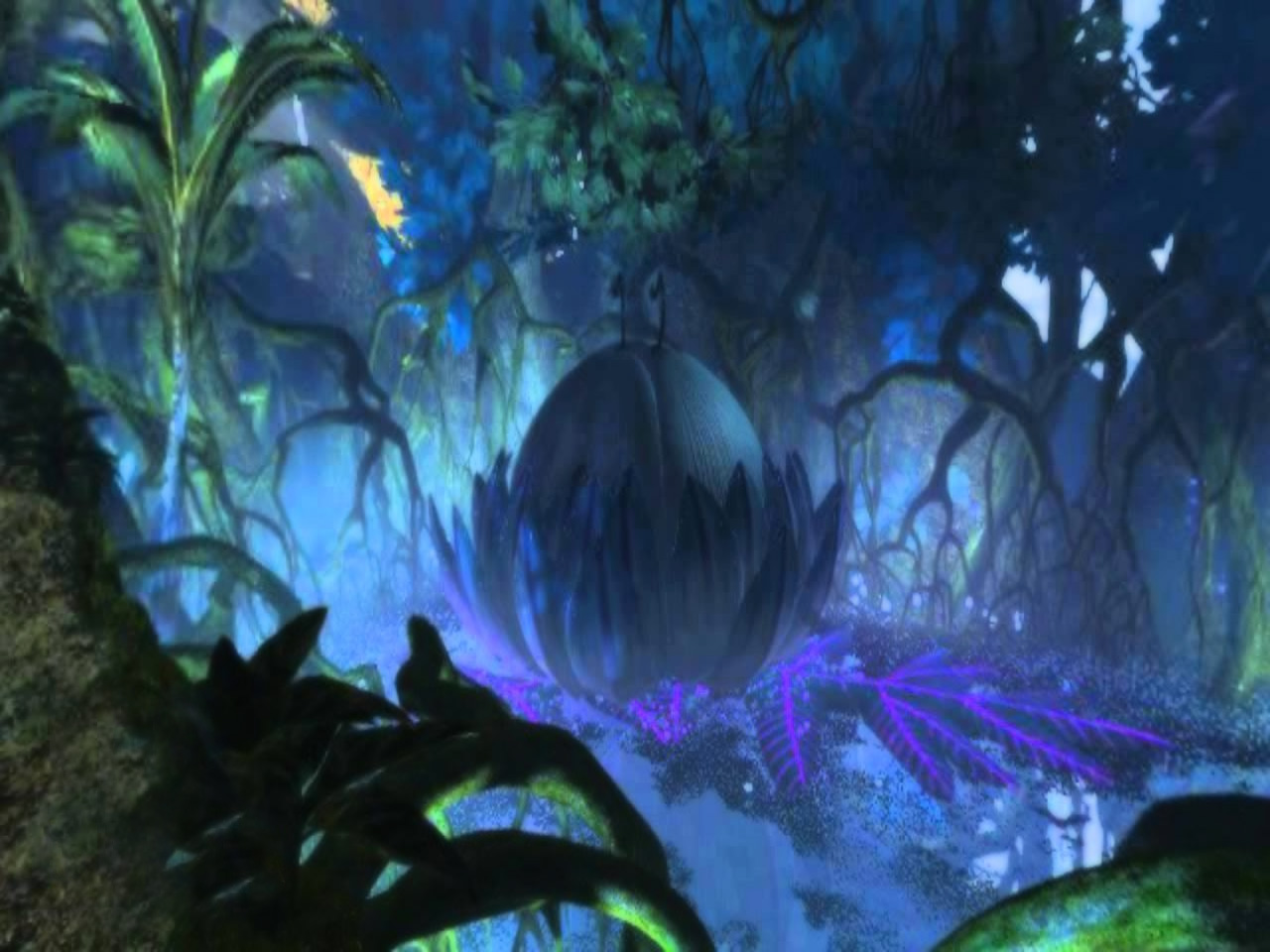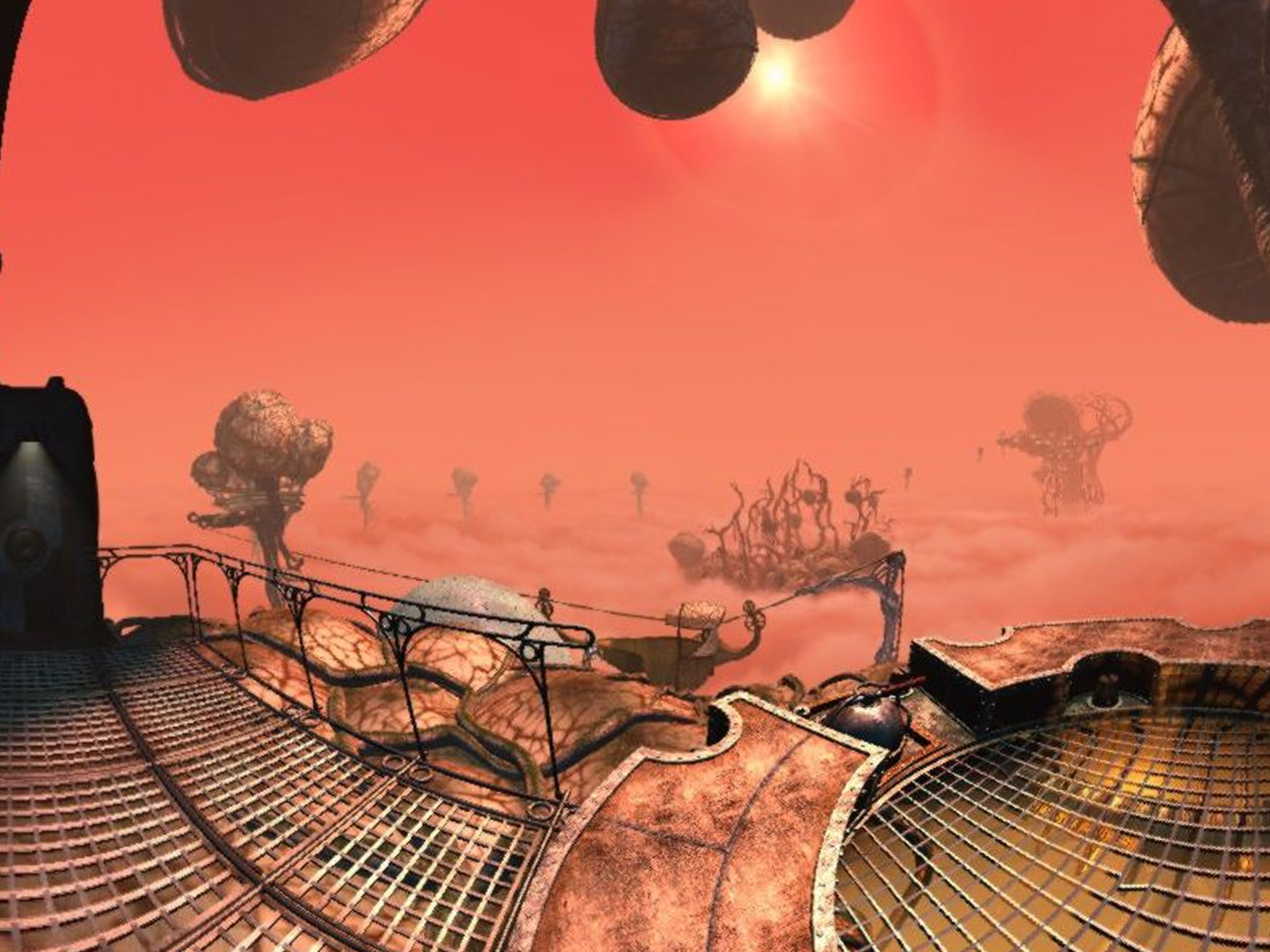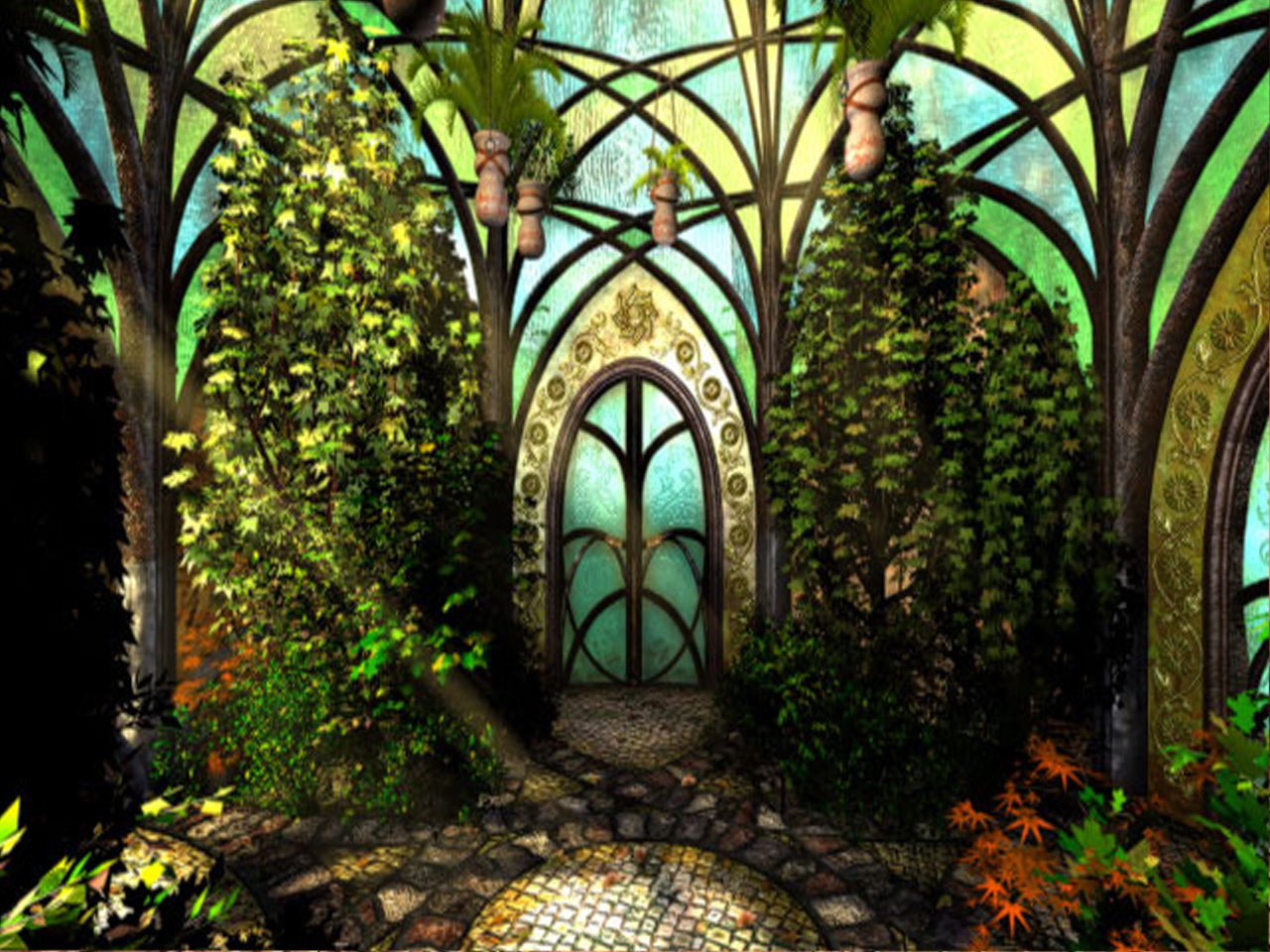Myst III: Exile was not developed by Cyan but by Presto Studios, the creators of the Journeyman Project series.
While Cyan pursued the shift of the Myst series into realtime 3d with a first test (RealMyst) and ultimately a Myst MMO (Uru)
they took on a consulting role assisting Presto Studios in their effort to create a third singleplayer Myst title.
Presto Studios, the creators of the Journeyman Project series, were chosen to lead development of Myst 3 by Cyan, and with Cyan's support pushed the series back towards the familiar 'diverse set of worlds' format of the original Myst, rather than Riven's decision to set 70% of the game in one single sprawling age location.
The worlds they created were absolutely lovely, a joy to explore even if they lacked the sheer depth and credibility of the age of Riven. The story they told through these spaces wasn't flawless but at least capable, and definitely elevated greatly by the presence of a more sympathetic and arguably complex antagonist in Saavedro (played by Academy-award winner Brad Dourif).
On top of the visual art, the storytelling, and the puzzles (admittedly a bit tacked on due to a story conceit) the soundtrack was fresh - an orchestral, bombastic creation by legendary video-game composer Jack Wall, who would go on to make soundtracks for over a dozen other notable games from Mass Effect to Portal and Portal 2, to Starcraft 2.
His approach blended big dramatic cues at key moments, with the sort of subtler, more atmospheric textural backgrounds that previously the series had made standard. The balance of the two mostly worked really well in this game.
UI wise, Myst III took a half-step towards realtime 3d, by giving players freedom to look around, but not to walk - using a panoramic 2.5d game engine.
Myst III: Exile is a favorite of many players who only are somewhat casually interested in Myst. Despite some confusing navigation in spots and a few fairly oddly designed puzzles, it's not an especially difficult entry to beat by Myst standards. Most players can finish it without asistance in roughly 10-18 hours.
Exile may lack a bit of the intricacy and authenticity of Riven but is definitely a more approachable game, with a personal, relatable narrative. It is often seen as the last 'genuinely good' Myst title, the moment before Uru and Myst 4-5 offered their mixed bag of good and bad design decisions.
We can debate why Myst III saw middling sales. It sold around 1.5 million copies, topping sales charts the month of release, but not dominating the charts for an entire year like Riven.
It might have been that Riven alienated players due to its difficulty curve and they didn't come back. Maybe the fact that Exile launched four years after Riven led people to forget about the series and lose track of it, by the time it arrived.
Or maybe the game's weak aspects harmed it - like the fact that it wasn't directly developed by the creators of Myst and Riven, or the simple reality that gaming options were way more diverse with far more promising options to choose between in 2001 than in the mid-90s.
Whatever the case, Exile was only a somewhat modest success despite what it did well, and perhaps stood as a warning sign for the prospects of the series going forward.
I'd place Myst III: Exile at an 8.9/10.
Puzzles: (8.3/10) Ranging from really well balanced to in spots confusingly odd, Exile's puzzles mostly do well overall. Edanna's puzzle design is a little far-fetched at times and just navigating the place is a minor puzzle in itself, but the reality is that the structuring of puzzles mostly is smartly handled. Returning to Myst's formula of a hub age with a set of other ages branching off from that, and not making any age as massive to traverse as Riven was, is a good decision for puzzle design, and the puzzle sequences in each age feel distinct because of the themes of these ages. And none of them is so brain-bustingly difficult that it greatly impedes progress. Exile might possibly be the easiest game to finish in this series, as it takes most players about 6-10 hours to complete, a similar structure and difficulty level to Myst, with the difference being that Myst had four ages branching off from its hub before the ending stuff happens, and this has three (slightly larger) ones.
Exile is more accessible to newcomers than most Myst games, loved even by some who had issues with the series in general.
Technology and UI (7.8/10): It's nice to be able to look around in 360-degree panoramic view, and it's freeing compared to original versions of Myst and Riven, but it still falls short of the immersion possible with realtime 3d. In some areas of Edanna, the UI choice worsens the player's ability to clearly navigate the visually confusing and dense setting.
Story: 9.1/10, really well executed, mostly. Brad Dourif's an amazing villain here, and this story makes the core themes of Myst more personal, maybe more poignant, than anywhere else in the series. While a lot is done really well here, the 'lesson age' story component feels like a bit of a cop-out, and the story more broadly feels like a well-told supplemental story than a foundation of it as was the case with Myst and Riven. Lesson ages seemed a rather lazy way to shoehorn puzzles in and justify them being there. Compared to the way Riven made puzzles a part of the storyworld, this is a weak spot.
Graphics and art direction: 9.3/10. Exile often looks wondrous. It has a set of very, very visually distinct worlds, each one clearly its own thing. After the brief intro scene, there's J'nanin, a windswept hub with the giant horn, linking out to the verdant and vertical Edanna, which is dense with organic life, and focused on an understanding of the ecology of that world and how it interacts. Voltaic is focused on energy generation in a sandy desert canyon, with wind, water, and geothermal power involved. And Amateria, with its perpetual dusk sunset and sprawling tracks and structures built all over mossy rock formations, is an absolute standout setting, with a superb end sequence rewarding the player for understanding of weight and kinetic physics, in perhaps the most fun way one can demonstrate physics - a giant roller coaster. And the ending in Narayan is also visually striking. Exile clearly hits the mark for visual splendor required for a good Myst title, but falls a bit short in credibility in the process, choosing architecture that's dramatic and artful at the expense of structural believability. And while it all is darned pretty, it never has the environmental depth and beaten-up or rusty detailing suggesting its long history, in the way Riven demonstrated. Great art direction, generally, but a bit devoid of depth, wear and tear. The limits of fine 3d detailing and weathering may be the result of budgetary compromise. Exile's production likely spent plenty on Jack Wall's orchestral soundtrack, and the casting of an Oscar winner as the antagonist, but the rest of the game had a team of about 15 people involved in the core design, programming and 3d art... a smaller team than existed for Riven, and working on a somewhat shorter schedule.
Music and sound design [9.0/10]: Jack Wall, the composer here, is now a legend, one of the most prolific and successful soundtrack composers in the game industry. Think: Portal 2. Starcraft 2. Mass Effect 2. Counter Strike: Global Offensive. And so on. And Myst 3: Exile was fairly early on in his career and helped him become that legend. Exile's soundtrack is richly emotive, ranging from memorably bombastic and epic at key moments to a degree unexpected in a Myst game yet fitting for those critical moments of the story, tense and poignant when it needs to be, and otherwise just nicely ambient in a mix of different ways. And all of it done with a full orchestra. So, top-notch soundtrack in general, even if at specific times the music seems a bit too on the nose, as I felt with the opening music for Edanna, an age which was initially accompanied by a very... Egyptian or Middle Eastern sounding music track that seemed to clearly indicate some sort of Mesopotamian Garden of Eden, Hanging Gardens, or lush Nile river setting in the most obvious way possible. This occasional tendency, this sense of being a bit too blatant in cues, was continued in Myst IV, with the 'angelic choir' type music in Serenia. It's the one reason I give Robyn Miller a slight edge over Wall in Myst soundtracks. Robyn never felt overly, distractingly trite in any of his tracks, and he somehow did a lot texturally with a far more limited audio setup, especially on Riven.
While Cyan pursued the shift of the Myst series into realtime 3d with a first test (RealMyst) and ultimately a Myst MMO (Uru)
they took on a consulting role assisting Presto Studios in their effort to create a third singleplayer Myst title.
Presto Studios, the creators of the Journeyman Project series, were chosen to lead development of Myst 3 by Cyan, and with Cyan's support pushed the series back towards the familiar 'diverse set of worlds' format of the original Myst, rather than Riven's decision to set 70% of the game in one single sprawling age location.
The worlds they created were absolutely lovely, a joy to explore even if they lacked the sheer depth and credibility of the age of Riven. The story they told through these spaces wasn't flawless but at least capable, and definitely elevated greatly by the presence of a more sympathetic and arguably complex antagonist in Saavedro (played by Academy-award winner Brad Dourif).
On top of the visual art, the storytelling, and the puzzles (admittedly a bit tacked on due to a story conceit) the soundtrack was fresh - an orchestral, bombastic creation by legendary video-game composer Jack Wall, who would go on to make soundtracks for over a dozen other notable games from Mass Effect to Portal and Portal 2, to Starcraft 2.
His approach blended big dramatic cues at key moments, with the sort of subtler, more atmospheric textural backgrounds that previously the series had made standard. The balance of the two mostly worked really well in this game.
UI wise, Myst III took a half-step towards realtime 3d, by giving players freedom to look around, but not to walk - using a panoramic 2.5d game engine.
Myst III: Exile is a favorite of many players who only are somewhat casually interested in Myst. Despite some confusing navigation in spots and a few fairly oddly designed puzzles, it's not an especially difficult entry to beat by Myst standards. Most players can finish it without asistance in roughly 10-18 hours.
Exile may lack a bit of the intricacy and authenticity of Riven but is definitely a more approachable game, with a personal, relatable narrative. It is often seen as the last 'genuinely good' Myst title, the moment before Uru and Myst 4-5 offered their mixed bag of good and bad design decisions.
We can debate why Myst III saw middling sales. It sold around 1.5 million copies, topping sales charts the month of release, but not dominating the charts for an entire year like Riven.
It might have been that Riven alienated players due to its difficulty curve and they didn't come back. Maybe the fact that Exile launched four years after Riven led people to forget about the series and lose track of it, by the time it arrived.
Or maybe the game's weak aspects harmed it - like the fact that it wasn't directly developed by the creators of Myst and Riven, or the simple reality that gaming options were way more diverse with far more promising options to choose between in 2001 than in the mid-90s.
Whatever the case, Exile was only a somewhat modest success despite what it did well, and perhaps stood as a warning sign for the prospects of the series going forward.
I'd place Myst III: Exile at an 8.9/10.
Puzzles: (8.3/10) Ranging from really well balanced to in spots confusingly odd, Exile's puzzles mostly do well overall. Edanna's puzzle design is a little far-fetched at times and just navigating the place is a minor puzzle in itself, but the reality is that the structuring of puzzles mostly is smartly handled. Returning to Myst's formula of a hub age with a set of other ages branching off from that, and not making any age as massive to traverse as Riven was, is a good decision for puzzle design, and the puzzle sequences in each age feel distinct because of the themes of these ages. And none of them is so brain-bustingly difficult that it greatly impedes progress. Exile might possibly be the easiest game to finish in this series, as it takes most players about 6-10 hours to complete, a similar structure and difficulty level to Myst, with the difference being that Myst had four ages branching off from its hub before the ending stuff happens, and this has three (slightly larger) ones.
Exile is more accessible to newcomers than most Myst games, loved even by some who had issues with the series in general.
Technology and UI (7.8/10): It's nice to be able to look around in 360-degree panoramic view, and it's freeing compared to original versions of Myst and Riven, but it still falls short of the immersion possible with realtime 3d. In some areas of Edanna, the UI choice worsens the player's ability to clearly navigate the visually confusing and dense setting.
Story: 9.1/10, really well executed, mostly. Brad Dourif's an amazing villain here, and this story makes the core themes of Myst more personal, maybe more poignant, than anywhere else in the series. While a lot is done really well here, the 'lesson age' story component feels like a bit of a cop-out, and the story more broadly feels like a well-told supplemental story than a foundation of it as was the case with Myst and Riven. Lesson ages seemed a rather lazy way to shoehorn puzzles in and justify them being there. Compared to the way Riven made puzzles a part of the storyworld, this is a weak spot.
Graphics and art direction: 9.3/10. Exile often looks wondrous. It has a set of very, very visually distinct worlds, each one clearly its own thing. After the brief intro scene, there's J'nanin, a windswept hub with the giant horn, linking out to the verdant and vertical Edanna, which is dense with organic life, and focused on an understanding of the ecology of that world and how it interacts. Voltaic is focused on energy generation in a sandy desert canyon, with wind, water, and geothermal power involved. And Amateria, with its perpetual dusk sunset and sprawling tracks and structures built all over mossy rock formations, is an absolute standout setting, with a superb end sequence rewarding the player for understanding of weight and kinetic physics, in perhaps the most fun way one can demonstrate physics - a giant roller coaster. And the ending in Narayan is also visually striking. Exile clearly hits the mark for visual splendor required for a good Myst title, but falls a bit short in credibility in the process, choosing architecture that's dramatic and artful at the expense of structural believability. And while it all is darned pretty, it never has the environmental depth and beaten-up or rusty detailing suggesting its long history, in the way Riven demonstrated. Great art direction, generally, but a bit devoid of depth, wear and tear. The limits of fine 3d detailing and weathering may be the result of budgetary compromise. Exile's production likely spent plenty on Jack Wall's orchestral soundtrack, and the casting of an Oscar winner as the antagonist, but the rest of the game had a team of about 15 people involved in the core design, programming and 3d art... a smaller team than existed for Riven, and working on a somewhat shorter schedule.
Music and sound design [9.0/10]: Jack Wall, the composer here, is now a legend, one of the most prolific and successful soundtrack composers in the game industry. Think: Portal 2. Starcraft 2. Mass Effect 2. Counter Strike: Global Offensive. And so on. And Myst 3: Exile was fairly early on in his career and helped him become that legend. Exile's soundtrack is richly emotive, ranging from memorably bombastic and epic at key moments to a degree unexpected in a Myst game yet fitting for those critical moments of the story, tense and poignant when it needs to be, and otherwise just nicely ambient in a mix of different ways. And all of it done with a full orchestra. So, top-notch soundtrack in general, even if at specific times the music seems a bit too on the nose, as I felt with the opening music for Edanna, an age which was initially accompanied by a very... Egyptian or Middle Eastern sounding music track that seemed to clearly indicate some sort of Mesopotamian Garden of Eden, Hanging Gardens, or lush Nile river setting in the most obvious way possible. This occasional tendency, this sense of being a bit too blatant in cues, was continued in Myst IV, with the 'angelic choir' type music in Serenia. It's the one reason I give Robyn Miller a slight edge over Wall in Myst soundtracks. Robyn never felt overly, distractingly trite in any of his tracks, and he somehow did a lot texturally with a far more limited audio setup, especially on Riven.





































































